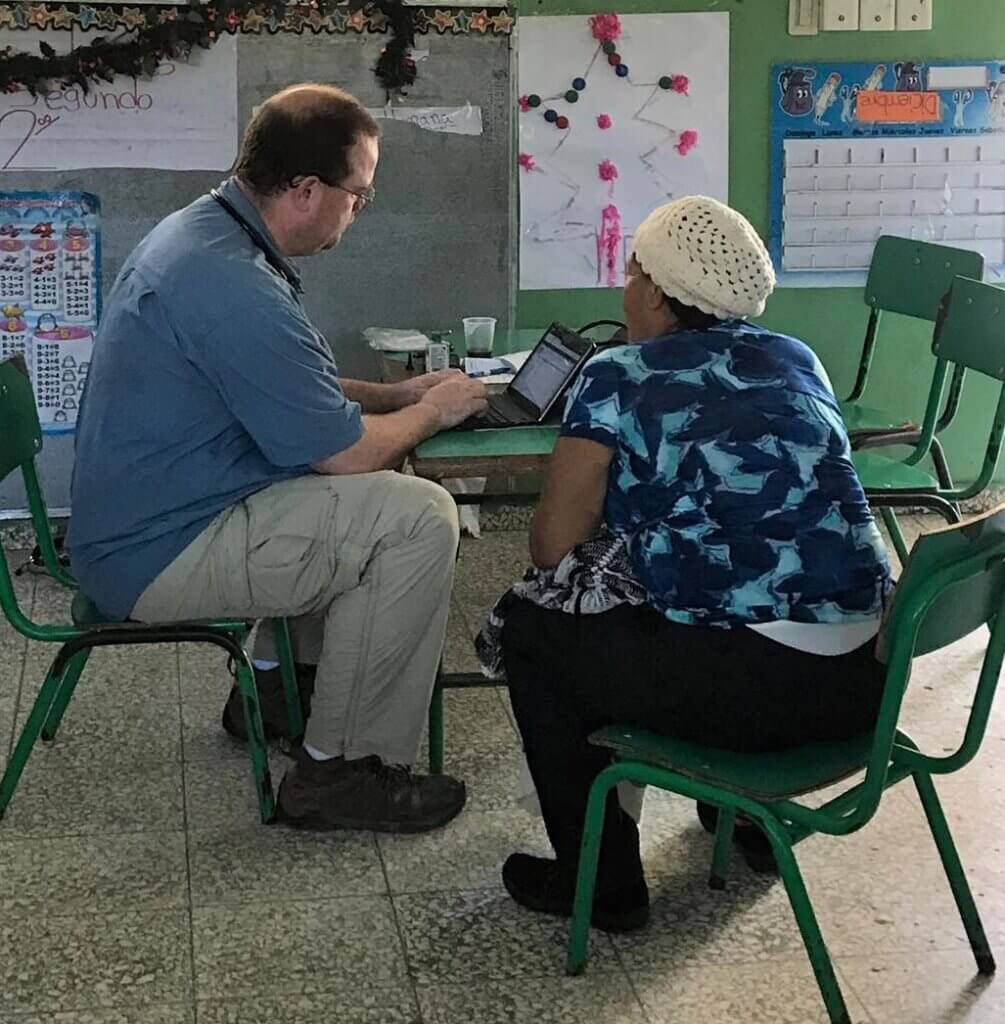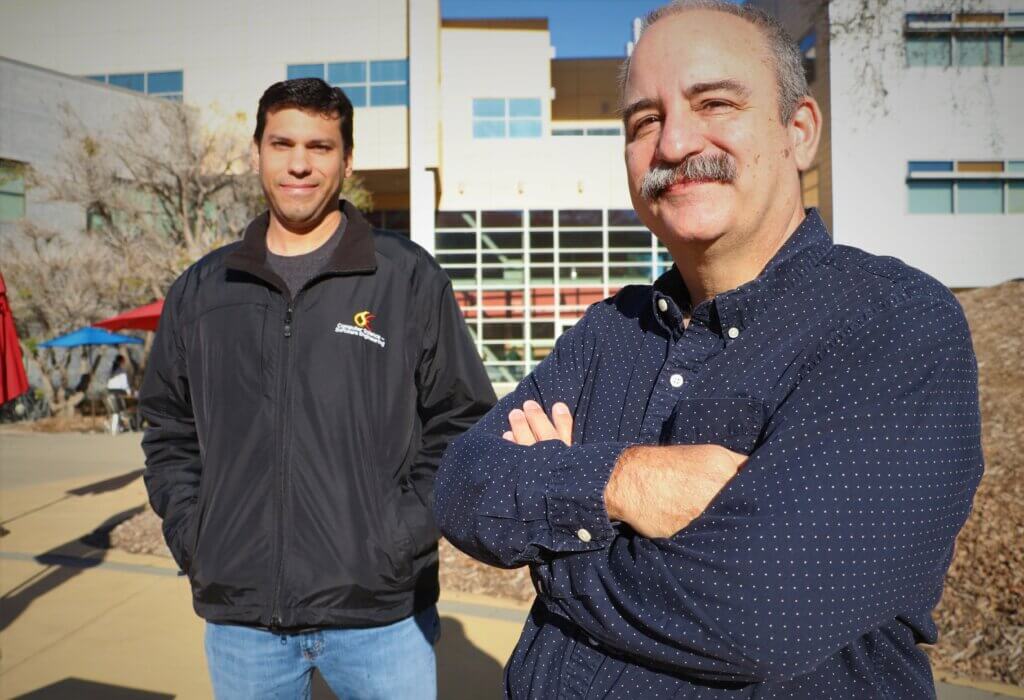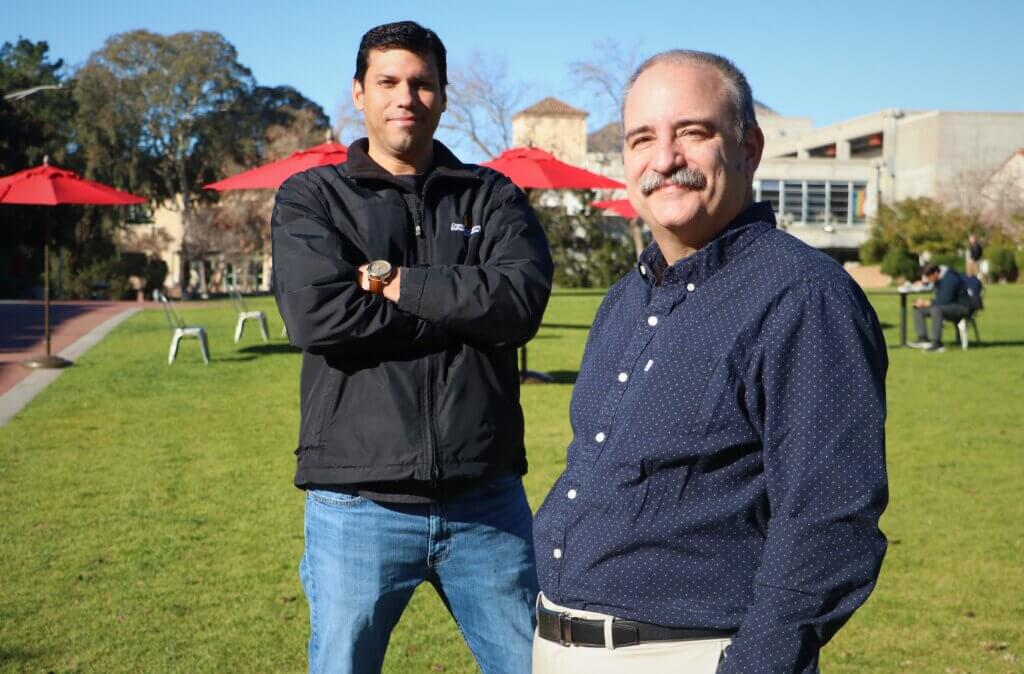
More than a decade after Sarah Draugelis volunteered to help earthquake victims in Haiti, there’s one patient she can’t forget.
A pregnant woman with gestational diabetes needed insulin. Yet, sadly, the medical tents that volunteers had set up didn’t have any, and the woman died. Later, Draugelis discovered another team had volunteered in that same village a month earlier.
“Just a simple email that said, ‘Bring insulin’ would have saved her life,” Draugelis said. “It was simple lack of communication.”
The tragedy gave Draugelis and others the idea to create fEMR, an electronic medical record system (EMR) that would make medical records easily accessible during disasters, even in places with no electricity or internet access. And now Cal Poly students are helping to take that technology to the next level.
“I think it’s really interesting that I can use computer science to help people around the world even from my own computer,” said Alex Burke, a student in BJ Klingenberg’s software engineering capstone class.
Since the fall of 2020, faculty members Klingenberg and Bruno da Silva have had their students work with Team fEMR to expand their capabilities.
“This has been a great partnership so far,” Klingenberg said. “I’m so excited for students to create software that actually sees the light of day and is not just an experiment or a prototype that a company wants them to learn but not to execute on.”
After returning from Haiti with a team from her alma mater, Wayne State University, in 2010, Draugelis and two others co-created fEMR (Fast Electronic Record System) and the nonprofit Team fEMR to help facilitate medical care with an open source EMR. The system facilitates continuing care by tracking important medical information about patients, and it allows clinicians to monitor outbreaks, like Covid-19.
“It is a very lightweight, easy-to-use system that allows clinicians to take down pertinent information regarding each clinical visit, much like they would do in a developed clinical setting here in America,” said Draugelis, president of Team fEMR.
Traditional EMRs, however, have a different goal in mind, said Andrew Mastie, chief technology officer with fEMR.
“They’re designed by hospitals for doctors, where billing is the core,” he said. “When you let your accountants drive your business, it’s great for business, but it’s lousy for patient care.”
EMR’s can be especially crucial in disaster areas, where paper records are often illegible and destroyed or lost.

“Given that the system is deployed to areas without Internet, we send each medical team with a set of networking equipment with which they can create a closed intranet signal, connect their own device, and access the EMR software,” Draugelis said.
Data is entered on devices similar to laptops. However, all medical data is stored on a server in the field, which means if something happened to the server, the data would be lost.
“One of the major improvements the Cal Poly teams have made to the system is creating a way for the system to connect to the internet and back up the data or update the software,” Draugelis said.
While some Cal Poly students have worked to connect offline and online versions of the system, others are developing a “trauma sheet” that would help clinicians responding to disasters. That trauma sheet details a patient’s current medical issues and includes important historical information, such as blood pressure, surgical history and heart rate.
The technology is currently deployed in refugee camps in Mexico, and fEMR is planning to share it with Canadian Medical Assistance Teams, a nonprofit that can deploy anywhere in the world in under 48 hours.
Bat Battur, another student working on the project, said he appreciates getting real-life experience working on a humanitarian effort.
“It’s not just coding,” he said. “It’s more understanding the problem.”
Klingenberg and da Silva plan to continue working with Team fEMR.
“The goal is to continue this successful partnership that brings real-world software and computational challenges to the students to work on in their software engineering capstone experience,” da Silva said, “while at the same time they contribute to a solution that will save lives and reduce the burden of finding access to health care in times of crisis.”


